calsfoundation@cals.org
Cotter (Baxter County)
| Latitude and Longitude: | 36°16’16″N 092°32’08″W |
| Elevation: | 620 feet |
| Area: | 2.45 square miles (2020 Census) |
| Population: | 886 (2020 Census) |
| Incorporation Date: | July 13, 1904 |
Historical Population as per the U.S. Census:
|
1810 |
1820 |
1830 |
1840 |
1850 |
1860 |
1870 |
1880 |
1890 |
1900 |
|
– |
– |
– |
– |
– |
– |
– |
– |
– |
– |
|
1910 |
1920 |
1930 |
1940 |
1950 |
1960 |
1970 |
1980 |
1990 |
2000 |
|
894 |
884 |
1,064 |
903 |
1,089 |
683 |
858 |
920 |
867 |
921 |
|
2010 |
2020 |
|
|
|
|
|
|
|
|
|
970 |
886 |
|
|
|
|
|
|
|
|
Cotter, situated along the White River in Baxter County, emerged in the early twentieth century as an important railroad city of the White River Railway, a division of the Missouri Pacific Railroad. The city is today well known as a destination for trout fishing, billing itself as “Trout Capital, U.S.A.”
Cotter got its start in late 1902 when the Red Bud Realty Company, which was organized by White River Railway attorney Walker V. Powell and certain local citizens, leased land for the railway. About forty acres were reserved for railroad use, including depots, a terminal yard, and an engine facility. The city grew like many other railroad-related boomtowns of the era. The post office was established on January 26, 1903. The Cotter Courier began publication on December 14, 1903, and First Baptist Church was organized on March 10, 1904.
The city was incorporated on July 13, 1904. At the time of its incorporation, many of the townspeople lived in a tent city near the river. The division headquarters of the White River Railway was established in Cotter in 1905. Early businesses included hotels, drugstores, a lumber company, and a button factory that used mussel shells harvested from the White River.
As the local economy grew, so did antipathy toward African Americans, many of whom were attracted to the area due to railroad work. As an August 25, 1905, article in the Cotter Courier noted, “There is a strong feeling against the negro in Cotter and the county, and the feeling is growing. It is quite likely there will not be a colored person in Baxter county within a year. They are not wanted.” On August 24, 1906, after a fight broke out between two black residents, public notice was served that all African Americans were to leave town immediately. At the time, the African-American population numbered ten, though the Arkansas Gazette reported that seven African Americans had been driven off in previous weeks. However, the family of Sam Mason was allowed to stay despite the prohibition. Cotter became a “sundown town”—a place where African Americans were forbidden from residing.
The Embroider and Social Club was founded in 1911; it was affiliated with the General Federation of Women’s Clubs in 1916 and eventually was renamed the Saturday Club. East Cotter (Baxter County) schools were consolidated with Cotter’s schools in 1915. The city never had a saloon, the price of the license being made extraordinarily expensive, but local bootleggers supplied demand.
An electrical system was installed in Cotter in 1927. However, the Flood of 1927 wiped out many of the city’s businesses. On November 11, 1930, Cotter Bridge was dedicated. This bridge cost approximately $500,000 and was 1,850 feet long. At the time, it was the largest Marsh rainbow-arch bridge in the United States. U.S. senator Thaddeus Caraway and U.S. representative Claude Fuller were present at the dedication. This bridge is now part of U.S. Highway 62. The bridge was a toll bridge until April 1938. The well-known Commercial Hotel was built in 1930. However, the Depression was hard on the residents of Cotter. The Bank of Cotter failed during the Depression, though the Public Works Administration (PWA), a New Deal program, provided some relief to local residents; among the projects it undertook was a water tower.
Gassville (Baxter County) and Whiteville (Baxter County) schools were consolidated with Cotter in December 1948. The year 1950 recorded Cotter’s highest population, but after that, the city went into decline, like many other railroad boom towns. President Harry Truman was photographed shaking hands with the mayor of Gassville before boarding the train to Cotter for the July 2, 1952, dedication of Bull Shoals Dam and Lake. On March 21, 1960, the last passenger train pulled out of Cotter. By that year, the population had declined by more than 400 since the last census. However, the city soon gained population, especially during the 1970s, as north-central Arkansas became a popular retirement destination. Trout fishing along the White River has also attracted tourists. In 1988, a new bridge across the White River was built north of the city, thus bypassing it. The Cotter School District is now the second largest school district in Baxter County.
The city of Cotter features three properties on the National Register of Historic Places: the Cotter Bridge, the Cotter Water Tower, and the Old Cotter High School Gymnasium. Among the other attractions are Big Spring Park and the Anglin-Tinnon Railroad Workers Memorial.
For additional information:
Adams, Walter M. The White River Railway, Being a History of the White River Division of the Missouri Pacific Railroad Company, 1901–1905. North Little Rock, AR: Walter M. Adams, 1991.
Blevins, Bill Dwayne. Baxter County Chronicles. Mountain Home, AR: Tumbling Shoals Publishing Company, 2005.
City of Cotter. https://cityofcotter.org/ (accessed March 7, 2022).
Cotter, Arkansas. http://www.cotterarkansas.com/ (accessed March 7, 2022).
Lancaster, Guy. “‘They Are Not Wanted’: The Extirpation of African Americans from Baxter County, Arkansas.” Arkansas Historical Quarterly 69 (Spring 2010): 28–44.
Lawry, B. J. Cotter, Arkansas: The Story of a Small Town. Cotter, AR: Ozark Newsletters, 1997.
Messick, Mary Ann. History of Baxter County, 1873–1973. Mountain Home, AR: Mountain Home Chamber of Commerce, 1973.
Trout Capital USA. http://www.troutcapitalusa.net/ (accessed March 7, 2022).
Staff of the CALS Encyclopedia of Arkansas
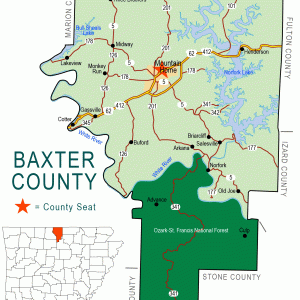 Baxter County Map
Baxter County Map 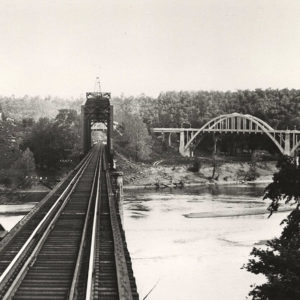 Bridge 178
Bridge 178 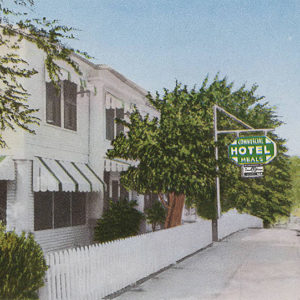 Commercial Hotel
Commercial Hotel 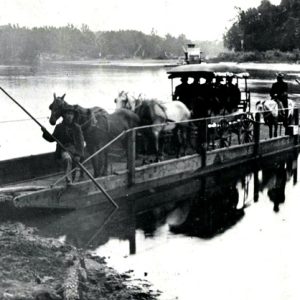 Cotter Ferry; 1904
Cotter Ferry; 1904 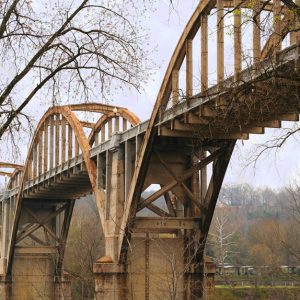 Cotter Bridge
Cotter Bridge 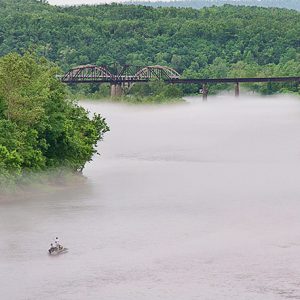 Cotter Bridge
Cotter Bridge 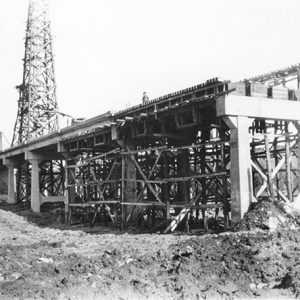 Cotter Bridge Construction
Cotter Bridge Construction  Cotter Bridge Construction
Cotter Bridge Construction 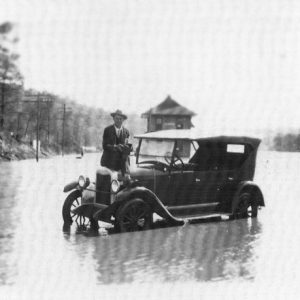 Cotter Flood
Cotter Flood 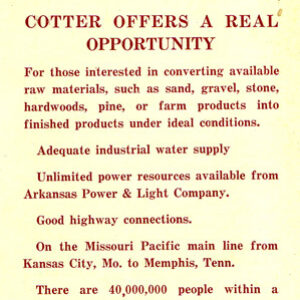 Cotter Pamphlet
Cotter Pamphlet 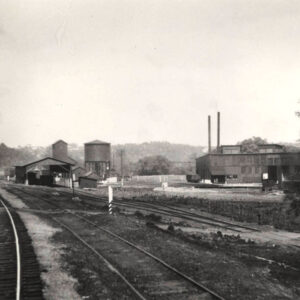 Cotter Roundhouse
Cotter Roundhouse  Cotter Street Scene
Cotter Street Scene 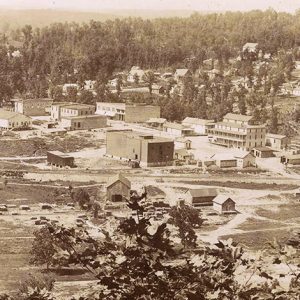 Cotter View
Cotter View 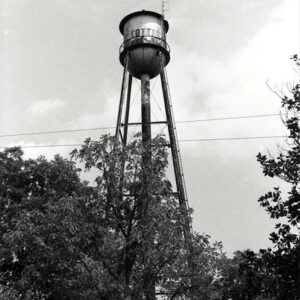 Cotter Water Tower
Cotter Water Tower  Cottonwood Tree
Cottonwood Tree 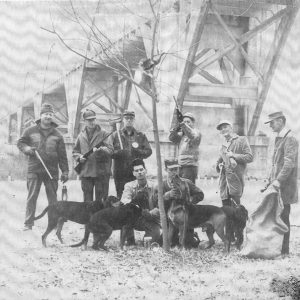 Racoon Hunters
Racoon Hunters 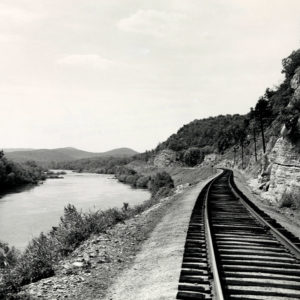 Rim Shoals
Rim Shoals 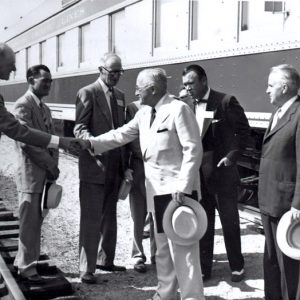 President Truman at Cotter
President Truman at Cotter 




Comments
No comments on this entry yet.